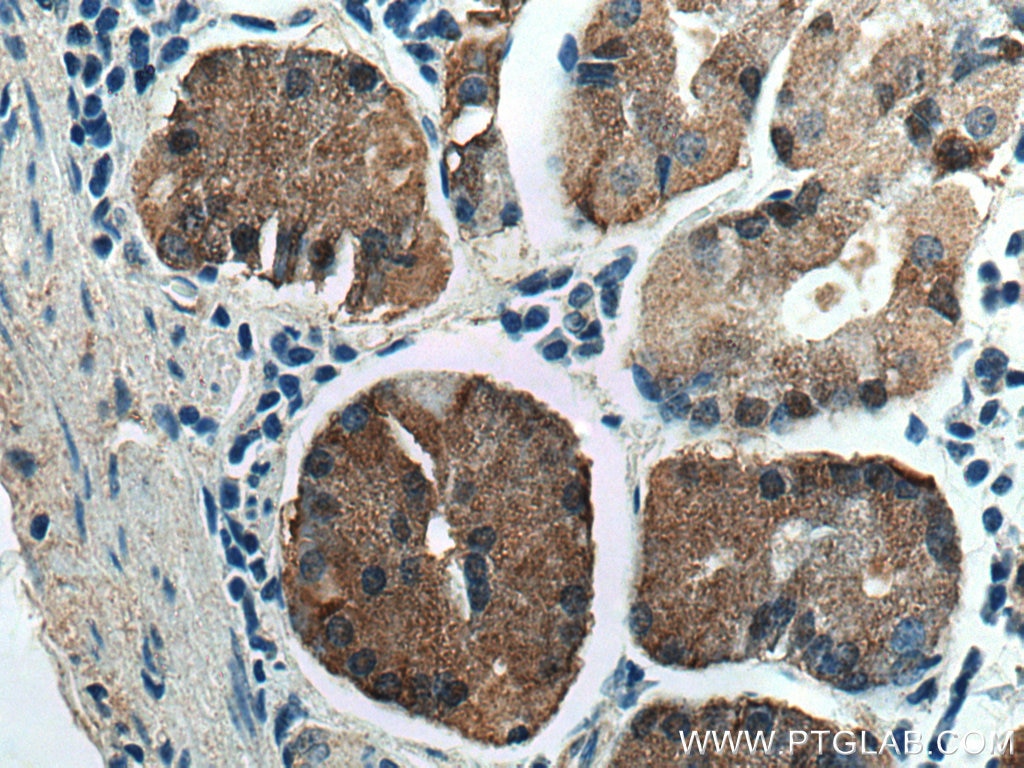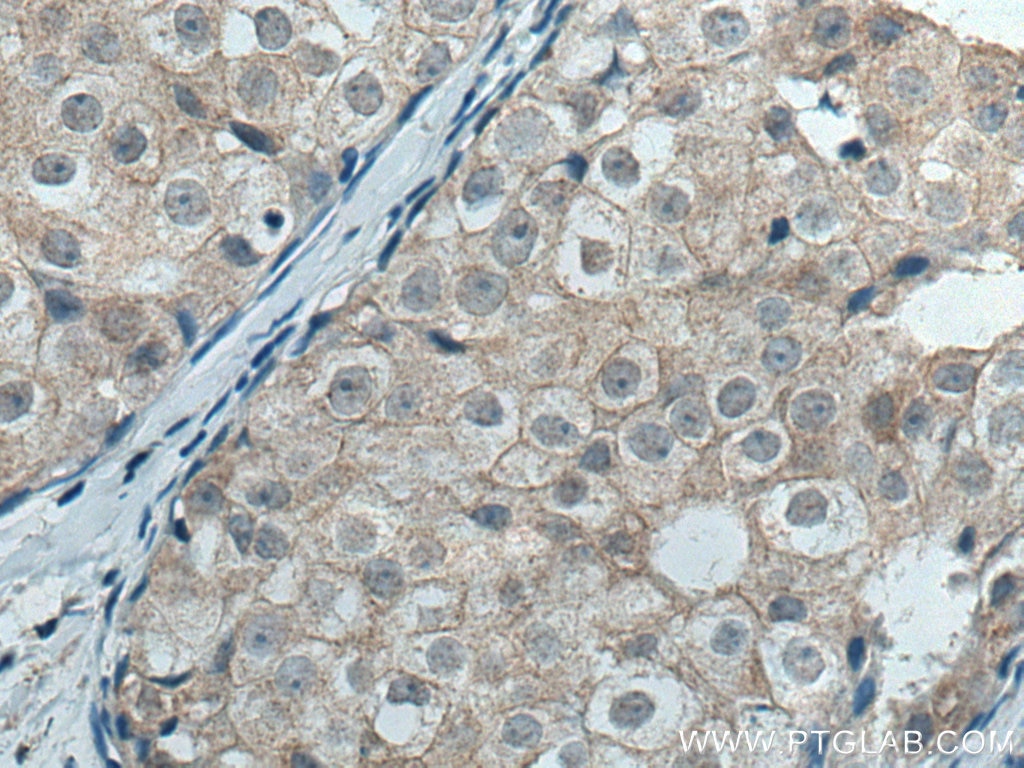Validation Data Gallery
Tested Applications
| Positive WB detected in | HeLa cells, MNK-45 cells |
| Positive IHC detected in | human stomach tissue, human breast cancer tissue Note: suggested antigen retrieval with TE buffer pH 9.0; (*) Alternatively, antigen retrieval may be performed with citrate buffer pH 6.0 |
Recommended dilution
| Application | Dilution |
|---|---|
| Western Blot (WB) | WB : 1:500-1:800 |
| Immunohistochemistry (IHC) | IHC : 1:50-1:500 |
| It is recommended that this reagent should be titrated in each testing system to obtain optimal results. | |
| Sample-dependent, Check data in validation data gallery. | |
Published Applications
| WB | See 1 publications below |
Product Information
13987-1-AP targets TRAK1 in WB, IHC, ELISA applications and shows reactivity with human samples.
| Tested Reactivity | human |
| Cited Reactivity | mouse |
| Host / Isotype | Rabbit / IgG |
| Class | Polyclonal |
| Type | Antibody |
| Immunogen | TRAK1 fusion protein Ag5055 相同性解析による交差性が予測される生物種 |
| Full Name | trafficking protein, kinesin binding 1 |
| Calculated molecular weight | 953 aa, 106 kDa |
| Observed molecular weight | 64 kDa |
| GenBank accession number | BC015922 |
| Gene Symbol | TRAK1 |
| Gene ID (NCBI) | 22906 |
| RRID | AB_2877999 |
| Conjugate | Unconjugated |
| Form | Liquid |
| Purification Method | Antigen affinity purification |
| UNIPROT ID | Q9UPV9 |
| Storage Buffer | PBS with 0.02% sodium azide and 50% glycerol , pH 7.3 |
| Storage Conditions | Store at -20°C. Stable for one year after shipment. Aliquoting is unnecessary for -20oC storage. |
Protocols
| Product Specific Protocols | |
|---|---|
| WB protocol for TRAK1 antibody 13987-1-AP | Download protocol |
| IHC protocol for TRAK1 antibody 13987-1-AP | Download protocol |
| Standard Protocols | |
|---|---|
| Click here to view our Standard Protocols |
Publications
| Species | Application | Title |
|---|---|---|
Front Neurosci O-GlcNAcylation is crucial for sympathetic neuron development, maintenance, functionality and contributes to peripheral neuropathy |




